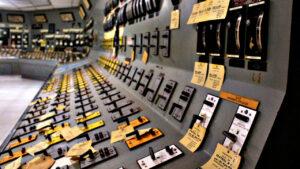The Philippines, despite its own challenges, is on track to achieve upper middle-income status by the end of this year or in 2026 — a milestone defined by the World Bank based on gross national income per capita. Beyond economic symbolism, this signals real improvements in the quality of life for many Filipinos. But to sustain this momentum, one crucial factor stands out: a stable, reliable, and affordable energy supply.
Energy underpins industrial competitiveness, digital transformation, inclusive development, and our attractiveness to large-scale, job-generating investments. Simply put, economic progress cannot be sustained without a robust baseload power generation system.
At the same time, power generation must align with the government’s emission goals and the move towards reducing our dependence on coal-fired power plants that emit greenhouse gases into the atmosphere.
The Philippine Energy Plan (PEP) 2023-2050 recognizes the urgency of transforming the sector in the decades ahead. It envisions an energy future that is affordable, reliable, resilient, and sustainable, with nuclear power integrated as a strategic component of the clean energy transition.
Under the PEP, the government has set ambitious targets: 35% of the energy mix from renewables by 2030, rising to 50% by 2040, and surpassing half of the total mix by 2050. But bridging the gap between ambition and reality remains a challenge. Many renewable sources — while promising — are still in the early stages of development and come with high costs. This creates an urgent need for a stable, low-carbon power source to complement the transition. Nuclear energy, with its ability to deliver clean and consistent baseload power, is uniquely suited to fill that role.
Public support for nuclear energy is also clear. A May 2024 Social Weather Stations survey commissioned by the Department of Energy found that 70% of Filipinos favor nuclear energy as part of the country’s power mix. Beyond power generation, nuclear energy can reduce oil imports, create high-quality jobs, and support climate action.
The government has responded with serious intent. Last month, President Ferdinand Marcos, Jr. signed Republic Act 12305, or the Philippine National Nuclear Energy Safety Act, laying down the regulatory framework for nuclear integration. This is a landmark development.
Building on this, Energy Secretary Sharon Garin issued her first policy directive following her confirmation — Department Circular 2025-10-0019 — during the 2nd International Nuclear Supply Chain Forum held on Oct. 2-3. The Circular creates the enabling framework for the country’s first commercial nuclear power project (NPP), the Pioneer NPP, which will be prioritized as a baseload plant regardless of the technology chosen. Ms. Garin has also committed the Department’s support for offtake agreements to help bring the project to viability.
But the government cannot embark on this nuclear journey alone.
Nuclear development demands a whole-of-society effort. Industry, foreign partners, the academe, and civil society must work together to build a secure, future-ready nuclear supply chain for the benefit of generations to come.
The private sector has already stepped up. In April 2025, Meralco launched its Nuclear Energy Strategic Transition (NEST) program — its flagship initiative to explore nuclear power as a long-term, low-carbon solution. NEST follows a multi-track approach: evaluating large-scale greenfield projects with international partners, assessing the potential of Small Modular Reactors (SMRs), and studying the possible rehabilitation of the Bataan Nuclear Power Plant.
Meralco is reinforcing its commitment through partnerships with leading South Korean institutions. Via the Meralco Power Academy, it recently signed an MoU with KEPCO International Nuclear Graduate School (KINGS) to launch the FISSION Program (Filipino Scholars and Interns on Nuclear Engineering), sending scholars abroad starting March 2026. Strategic agreements are also underway to explore SMR deployment in the Philippines.
On the diplomatic front, the Philippines has formalized partnerships with the US and Canada through the 123 Agreement and Administrative Agreement, respectively. The Department of Energy is also pursuing similar arrangements with South Korea and Japan — two countries with proven nuclear programs and technology.
These partnerships not only accelerate technical capacity but also underscore a broader strategic imperative: energy security in a time of geopolitical uncertainty. In a region facing volatile fuel markets and heightened competition for resources, nuclear energy provides a hedge — giving the Philippines greater control over its energy future while reducing vulnerability to external shocks.
Next year will be a test of readiness. After years of planning and partnership-building, the real work of developing nuclear infrastructure that delivers — on budget, on time, and on target, must now begin.
This phase requires decisive, coordinated implementation anchored in consistency of purpose and disciplined action. Nuclear energy must move from the margins of policy to the center of execution, supported by capable institutions and long-term planning.
The challenge is not only technical. It is institutional and political. Advancing this agenda will require coordination across agencies, consistency across administrations, and a recognition that energy security is a strategic imperative. If we get this right, we won’t just meet immediate demand — we will reshape our energy landscape to support a new era of inclusive prosperity
Victor Andres “Dindo” C. Manhit is the president of the Stratbase ADR Institute.

